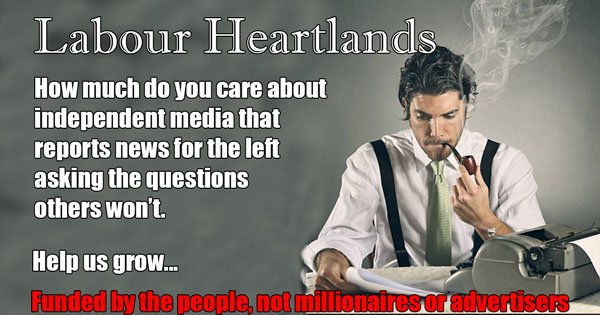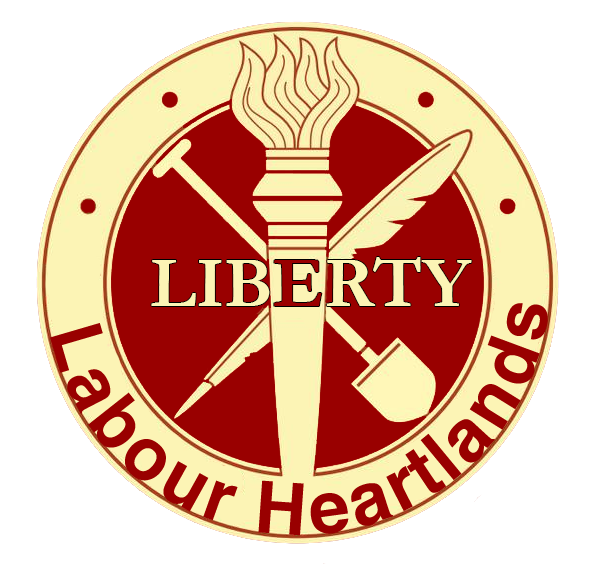The Day that Changed the World: Remembering VE Day 1945
May 8th, 1945, will forever be etched in the collective consciousness of those who bore witness to it—the indelible mark of VE (Victory in Europe) Day. It signified the long-awaited culmination of an arduous struggle spanning nearly six years—a war that exacted a devastating toll, claiming the lives of millions, laying waste to homes, families, and cities, and subjecting entire nations to unfathomable suffering and deprivation.
As news of Germany’s unconditional surrender reverberated across the globe, a wave of profound relief washed over the masses, for the burdensome weight of total war was at last lifted from their weary shoulders. The echoes of jubilation resounded through the thoroughfares of towns and cities, as people poured into the streets, their hearts brimming with exultation. Street parties erupted, casting a vibrant tapestry of dance and song—a spontaneous outpouring of unbridled joy.
Yet, VE Day did not mark the end of the conflict, nor did it abruptly terminate the enduring impact of the war on humanity. The struggle against Japan endured until the fateful August of 1945, while the reverberations of the Second World War reverberated far beyond the capitulation of Germany and Japan—leaving an indelible imprint on the political, social, and economic fabric of nations.
In the following account, we shall delve into the essence of VE Day, casting a discerning eye upon the manner in which it was commemorated both in Britain and across the globe. For there is much to glean from this pivotal moment in history, serving as a poignant reminder of the sacrifices made and the resilience displayed in the face of unprecedented adversity.
VE Day: A Resounding Triumph and the Lingering Echoes of War

GERMANY SIGNED AN UNCONDITIONAL SURRENDER
With Berlin surrounded, Adolf Hitler committed suicide on 30 April 1945. His named successor was Grand Admiral Karl Dönitz. During his brief spell as Germany’s president, Dönitz negotiated an end to the war with the Allies – whilst seeking to save as many Germans as possible from falling into Soviet hands.
A German delegation arrived at the headquarters of British Field Marshal Bernard Montgomery at Lüneburg Heath, east of Hamburg, on 4 May. There, Montgomery accepted the unconditional surrender of German forces in the Netherlands, northwest Germany and Denmark. On 7 May, at his headquarters in Reims, France, Supreme Allied Commander General Eisenhower accepted the unconditional surrender of all German forces. The document of surrender was signed on behalf of Germany by General Alfred Jodl and came into effect the following day.
Soviet leader Josef Stalin wanted his own ceremony. At Berlin on 8 May, therefore, a further document was signed – this time by German Field Marshal William Keitel. Dönitz’s plan was partially successful and millions of German soldiers surrendered to Allied forces, thereby escaping Soviet capture.

Nazi forces were vastly outnumbered and outgunned, and could do nothing but slow the Soviet advance.
On 30 April 1945, Hitler killed himself, the day after marrying Eva Braun. Their bodies were taken above ground and burned in a bomb crater nearby.
Not long afterwards, Soviet forces captured the Reichstag. A famous staged photo shows a Soviet soldier lifting the flag of the USSR above the historic parliament building.

The city officially surrendered on 2 May, though fighting continued until the end of the war in Europe on 8 May.
THERE WAS DANCING IN THE STREETS AND PUBS STAYED OPEN LATE
The VE Day celebrations continued well into the night. The largest crowds in Britain were in the capital, but people all around the country took part in the parties, singing and dancing. Many bonfires and fireworks were lit to mark the occasion.

© IWM (EA 65796)PHOTOGRAPHS
VICTORY IN EUROPE WAS MARKED AROUND THE WORLD
The news that the war was over in Europe quickly spread around the world, and people of the British Empire and the Allied countries wanted to celebrate the defeat of Nazi Germany.
In the United States of America, the victory was tempered with the recent death of President Roosevelt, who had led his country through the war years. His successor, Harry S. Truman, dedicated the day to Roosevelt and ordered that flags be kept at half-mast – as part of the 30-day mourning period. Despite this, there were still scenes of great rejoicing in America: in New York, 15,000 police were mobilised to control the huge crowds that had massed in Times Square.
An estimated 50,000 people were crowded around Piccadilly Circus by midnight. The joy of the day broke down normal social conventions, and people spoke to and embraced those whom they had never met before. Music was provided by gramophones, accordions and barrel organs, and revellers sang and danced to the popular tunes of the day. Licensing hours were extended so that people could toast the end of the war with a drink (or two), and dance halls stayed open until midnight.

In Australia, the celebrations were also tinged with a sombre mood. The war in the Far East and Pacific was still being fought, and many Australians were serving overseas. But there were scenes of rejoicing in many cities, and services were held in churches around the country to give thanks for the war ending in Europe.
In Paris, huge numbers of people flocked to the centre of the city to celebrate. An eyewitness recalled: ‘On the Champs Elysees they were singing ‘It’s a Long Way to Tipperary,’…in the Place de la Concorde to the Arc de Triomphe in the Place de l’Etoile, there was hardly any place to breathe and no place at all to move.’
The charged atmosphere and large crowds could lead to unrest. In Halifax, Canada, riots broke out among the large concentration of military personnel stationed there. Thousands of soldiers, sailors and civilians looted liquor stores – which had been closed for the VE Day holiday – and the resulting riots and vandalism resulted in several deaths.
© IWM (FRE 7310)PHOTOGRAPHS
IT WAS A DAY OF MIXED EMOTIONS
Not everyone celebrated VE Day. For those who had lost loved ones in the conflict, it was a time to reflect. Amidst the street parties and rejoicing, many people mourned the death of a friend or relative, or worried about those who were still serving overseas. For many of the widows the war had produced, the noise and jubilation as people celebrated VE Day was too much to bear and not something they could take part in.
There was also an air of anti-climax. The hardships of the war years had taken their toll on many people and left them with little energy for rejoicing. In Britain, the strain of air raids, the strictures of wartime life and the impact of rationing all left their mark on a weary population who knew there were more difficulties yet to endure.
© IWM (D 24585)
IT WAS NOT THE END OF THE WAR

For members of the Allied forces who were still serving overseas on VE Day, the occasion was bittersweet. Although it meant victory in one theatre, the war was not yet over in the Far East and Pacific. The battle conditions there had been some of the toughest of the war. In May 1945, thousands of Allied servicemen were still fighting in the Far East and thousands more were held as prisoners of war in terrible conditions.
The final months of the war in the Pacific saw heavy casualties on both sides, but ultimately ended in victory for the Allies. Japan’s leaders agreed to surrender on 14 August and the act of surrender was signed on 2 September. For people in Britain, the end of the fighting didn’t mean an end to the impact of the war on their lives. Although many things slowly began to return to normal, it took time to rebuild the country and shortages were still felt: clothes rationing lasted until 1949 and food rationing remained in place until 1954. Peace brought its own problems. The huge economic cost of the war resulted in post-war austerity in a practically bankrupt Britain and the far-reaching political effects of the conflict ranged from the fall of the British Empire to the onset of the Cold War.
Costs of the war
Killed, wounded, prisoners, or missing
The statistics on World War II casualties are inexact. Only for the United States and the British Commonwealth can official figures showing killed, wounded, prisoners or missing for the armed forces be cited with any degree of assurance. For most other nations, only estimates of varying reliability exist. Statistical accounting broke down in both Allied and Axis nations when whole armies were surrendered or dispersed. Guerrilla warfare, changes in international boundaries, and mass shifts in population vastly complicated postwar efforts to arrive at accurate figures even for the total dead from all causes.
Civilian deaths from land battles, aerial bombardment, political and racial executions, war-induced disease and famine, and the sinking of ships probably exceeded battle casualties. These civilian deaths are even more difficult to determine, yet they must be counted in any comparative evaluation of national losses. There are no reliable figures for the casualties of the Soviet Union and China, the two countries in which casualties were undoubtedly greatest. Mainly for this reason, estimates of total dead in World War II vary anywhere from 35,000,000 to 60,000,000—a statistical difference of no small import. Few have ventured even to try to calculate the total number of persons who were wounded or permanently disabled.
However inexact many of the figures, their main import is clear. The heaviest proportionate human losses occurred in eastern Europe where Poland lost perhaps 20 percent of its prewar population, Yugoslavia and the Soviet Union around 10 percent. German losses, of which the greater proportion occurred on the Eastern Front, were only slightly less severe. The nations of western Europe, however great their suffering from occupation, escaped with manpower losses that were hardly comparable with those of World War I. In East Asia, the victims of famine and pestilence in China are to be numbered in the millions, in addition to other millions of both soldiers and civilians who perished in battle and bombardment.
Courtesy of the Imperial War Museum
Help Us Sustain Ad-Free Journalism
Sorry, I Need To Put Out the Begging Bowl
Independent Journalism Needs You
Our unwavering dedication is to provide you with unbiased news, diverse perspectives, and insightful opinions. We're on a mission to ensure that those in positions of power are held accountable for their actions, but we can't do it alone. Labour Heartlands is primarily funded by me, Paul Knaggs, and by the generous contributions of readers like you. Your donations keep us going and help us uphold the principles of independent journalism. Join us in our quest for truth, transparency, and accountability – donate today and be a part of our mission!
Like everyone else, we're facing challenges, and we need your help to stay online and continue providing crucial journalism. Every contribution, no matter how small, goes a long way in helping us thrive. By becoming one of our donors, you become a vital part of our mission to uncover the truth and uphold the values of democracy.
While we maintain our independence from political affiliations, we stand united against corruption, injustice, and the erosion of free speech, truth, and democracy. We believe in the power of accurate information in a democracy, and we consider facts non-negotiable.
Your support, no matter the amount, can make a significant impact. Together, we can make a difference and continue our journey toward a more informed and just society.
Thank you for supporting Labour Heartlands









